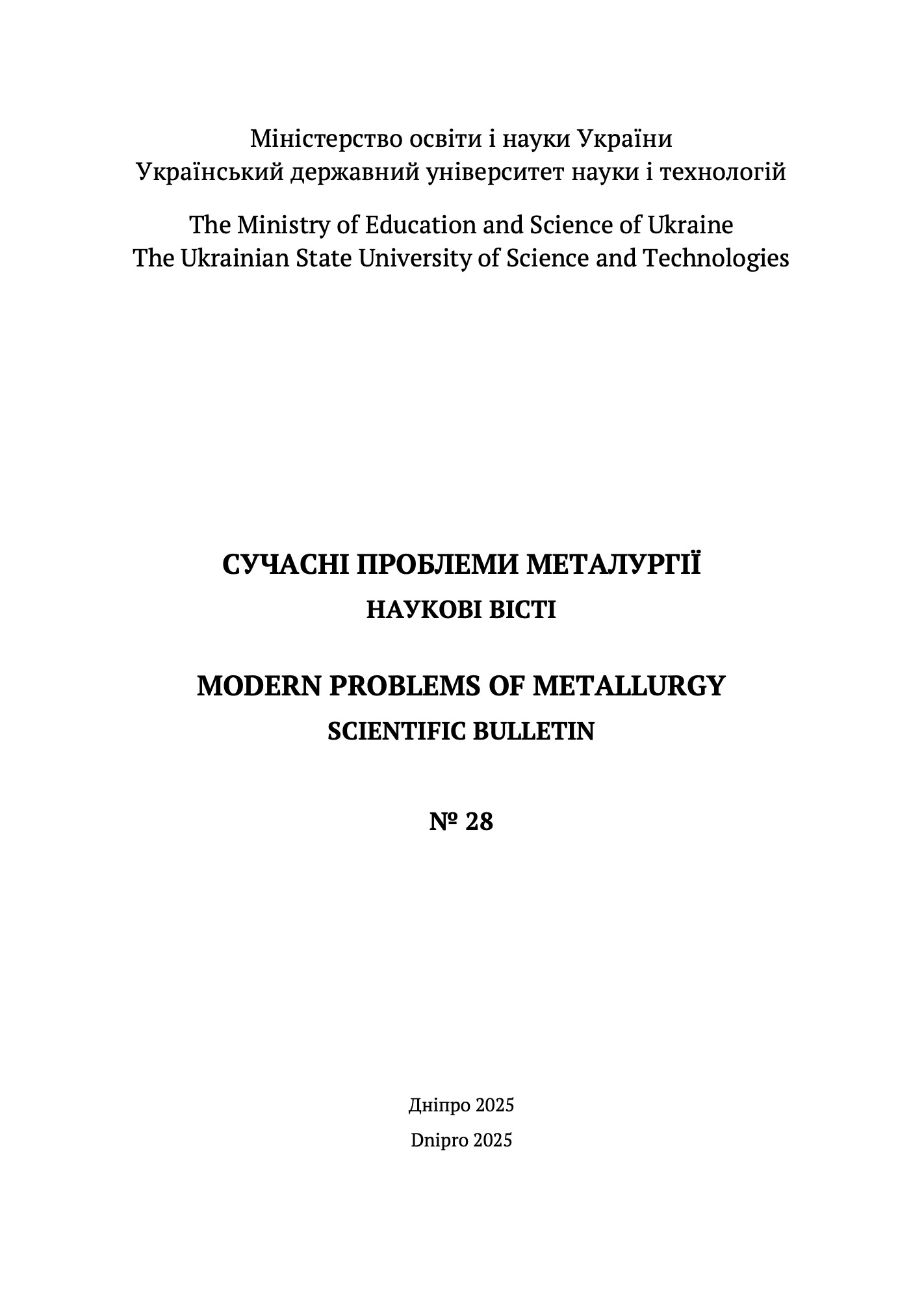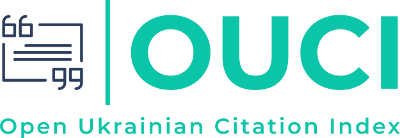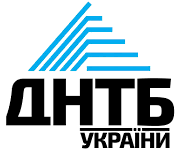FEM SIMULATION AND EXPERIMENTAL PROCEDURE FOR ROLL BONDING OF KIRIGAMI-TYPE COMPOSITES
DOI:
https://doi.org/10.34185/1991-7848.2025.01.11Keywords:
roll bonding, expanded steel mesh, aluminum matrix, FEM simulation.Abstract
The study investigates the application of kirigami techniques in engineering to produce multilayer composite materials with programmable mechanical properties. The primary objective is to develop and validate a mathematical model for the roll-bonding process of an aluminum matrix reinforced with a steel expanded metal mesh. The model has been developed in the QForm UK environment using the finite element method, taking into account the relevant rheological properties of the materials and boundary conditions. Experimental roll-bonding studies were carried out on laboratory duo and quarto rolling mills at temperatures up to 500 °C and various degrees of deformation (20–50 %). The results of the numerical simulations are in agreement with the experimental data regarding changes in mesh geometry and strain distribution. It was found that even at a small degree of deformation (20 %), it is possible to form an effective bond with a “zip-bonding” effect; but that such a bond is unstable. It is therefore advisable to apply a degree of deformation greater than 30% in the roll-bonding process. The results of the study can be used for the further development of manufacturing technologies for functional kirigami structures based on metal composites.
References
Engineering by Cuts: How Kirigami Principle Enables Unique Mechanical Properties and Functionalities / J. Tao et al. Advanced Science. 2022. P. 2204733. URL: https://doi.org/10.1002/advs.202204733 (date of access: 14.01.2025).
Transformation of the kirigami-type deformable inlay during roll bonding / Y. Frolov et al. Naukovyi Visnyk Natsionalnoho Hirnychoho Universytetu. 2025. No. 1. P. 34–39. URL: https://doi.org/10.33271/nvngu/2025-1/034 (date of access: 14.01.2025).
Kirigami‐Inspired Inflatables with Programmable Shapes / L. Jin et al. Advanced Materials. 2020. Vol. 32, no. 33. P. 2001863. URL: https://doi.org/10.1002/adma.202001863 (date of access: 14.01.2025).
Hwang D.-G., Bartlett M. D. Tunable Mechanical Metamaterials through Hybrid Kirigami Structures. Scientific Reports. 2018. Vol. 8, no. 1. URL: https://doi.org/10.1038/s41598-018-21479-7 (date of access: 14.01.2025).
Neville R. M., Scarpa F., Pirrera A. Shape morphing Kirigami mechanical metamaterials. Scientific Reports. 2016. Vol. 6, no. 1. URL: https://doi.org/10.1038/srep31067 (date of access: 14.01.2025).
Murali Babu S. P., Parvaresh A., Rafsanjani A. Tailoring materials into kirigami robots. Device. 2024. Vol. 2, no. 9. P. 100469. URL: https://doi.org/10.1016/j.device.2024.100469 (date of access: 23.01.2025).
Recent Progress in Stretchable Batteries for Wearable Electronics / W. Song et al. Batteries & Supercaps. 2019. Vol. 2, no. 3. P. 181–199. URL: https://doi.org/10.1002/batt.201800140 (date of access: 23.01.2025).
Soft composite hinge actuator and application to compliant robotic gripper / W. Wang et al. Composites Part B: Engineering. 2016. Vol. 98. P. 397–405. URL: https://doi.org/10.1016/j.compositesb.2016.05.030 (date of access: 23.01.2025).
A new class of transformable kirigami metamaterials for reconfigurable electromagnetic systems / Y. Yang et al. Scientific Reports. 2023. Vol. 13, no. 1. URL: https://doi.org/10.1038/s41598-022-27291-8 (date of access: 11.02.2025).
Large deformation behavior and mechanism of graphene kirigami under shear and combined shear-tension loads / P. Shi et al. Computational Materials Science. 2025. Vol. 251. P. 113746. URL: https://doi.org/10.1016/j.commatsci.2025.113746 (date of access: 11.02.2025).
Tsutsui T., Taguchi Y., Hashimoto M. Quadrant kirigami-type electrothermal MEMS actuator with multi-degree-of-freedom morphing capability. Journal of Micromechanics and Microengineering. 2024. URL: https://doi.org/10.1088/1361-6439/ada164 (date of access: 11.02.2025).
Architected hierarchical kirigami metallic glass with programmable stretchability / D. X. Han et al. AIP Advances. 2022. Vol. 12, no. 3. P. 035305. URL: https://doi.org/10.1063/5.0084906 (date of access: 11.02.2025).
QForm UK. Version 10.2.4. Oxford, UK : Micas Simulations Limited. URL: https://www.qform3d.com.
Analysis of the deep drawing process of three-layered explosive welded composite / K. Marcin et al. Procedia Manufacturing. 2020. Vol. 50. P. 153–158. URL: https://doi.org/10.1016/j.promfg.2020.08.029 (date of access: 14.02.2025).
Analysis of Forming Limits During Cold Forging of Aluminum Hybrid Billets / K. C. Grötzinger et al. Lecture Notes in Mechanical Engineering. Cham, 2024. P. 371–382. URL: https://doi.org/10.1007/978-3-031-58006-2_29 (date of access: 14.02.2025).
Simulation modeling of the multistage differential bending process of photovoltaic module composite materials / V. Kamburov et al. 13TH INTERNATIONAL SCIENTIFIC CONFERENCE TECHSYS 2024 – ENGINEERING, TECHNOLOGIES AND SYSTEMS, Plovdiv, Bulgaria. 2025. P. 070005. URL: https://doi.org/10.1063/5.0260188 (date of access: 14.04.2025).
Deformation of expanded steel mesh inlay inside aluminum matrix during the roll bonding / Y. Frolov et al. Journal of Manufacturing Processes. 2020. Vol. 58. P. 857–867. URL: https://doi.org/10.1016/j.jmapro.2020.08.049 (date of access: 14.02.2025).
Konovodov D. V., Syvash V. I. Modelyuvannya protsesu haryachoyi prokatky trysharovykh shtab zi splaviv alyuminiyu ta mahniyu. Obrobka materialiv tyskom. 2020. № 1(50). S. 259–265. URL: https://doi.org/10.37142/2076-2151/2020-1(50)259 (data zvernennya: 14.02.2025).
Downloads
Published
Issue
Section
License
Copyright (c) 2025 Modern Problems of Metallurgy

This work is licensed under a Creative Commons Attribution 4.0 International License.












